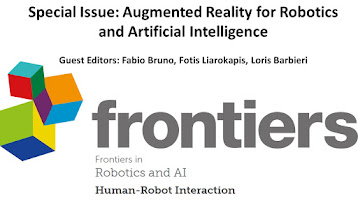Augmented Reality (AR) is one of the most promising enabling technologies that will become a key factor in future industries thanks to its capability to enhance the perception of the real world by integrating virtual objects and information. The spread of AR techniques will be amplified, especially in the industrial sector, by the rapid advances of modern technologies related to Artificial Reality (AI). AI, in fact, includes machine and deep learning algorithms, as well as statistical models capable of performing tasks without explicit instructions, that can be used in AR applications to enhance the perception and understanding of the real world.
The combination of AR and AI technologies could lead to the development of new, effective, and natural human-robot interaction techniques. The goal of this Research Topic is to bring together state-of-the-art achievements in AR, Robotics and AI. In particular, AI enables scene understanding features that can enrich AR applications with context-aware data directly superimposed over the real-world view. This augmented visualization is particularly useful in robotics applications where the humans are engaged for remote controlling or for cooperative working. Some interesting applications have been recently demonstrated in the context of autonomous or semi-autonomous vehicles.
More information:






